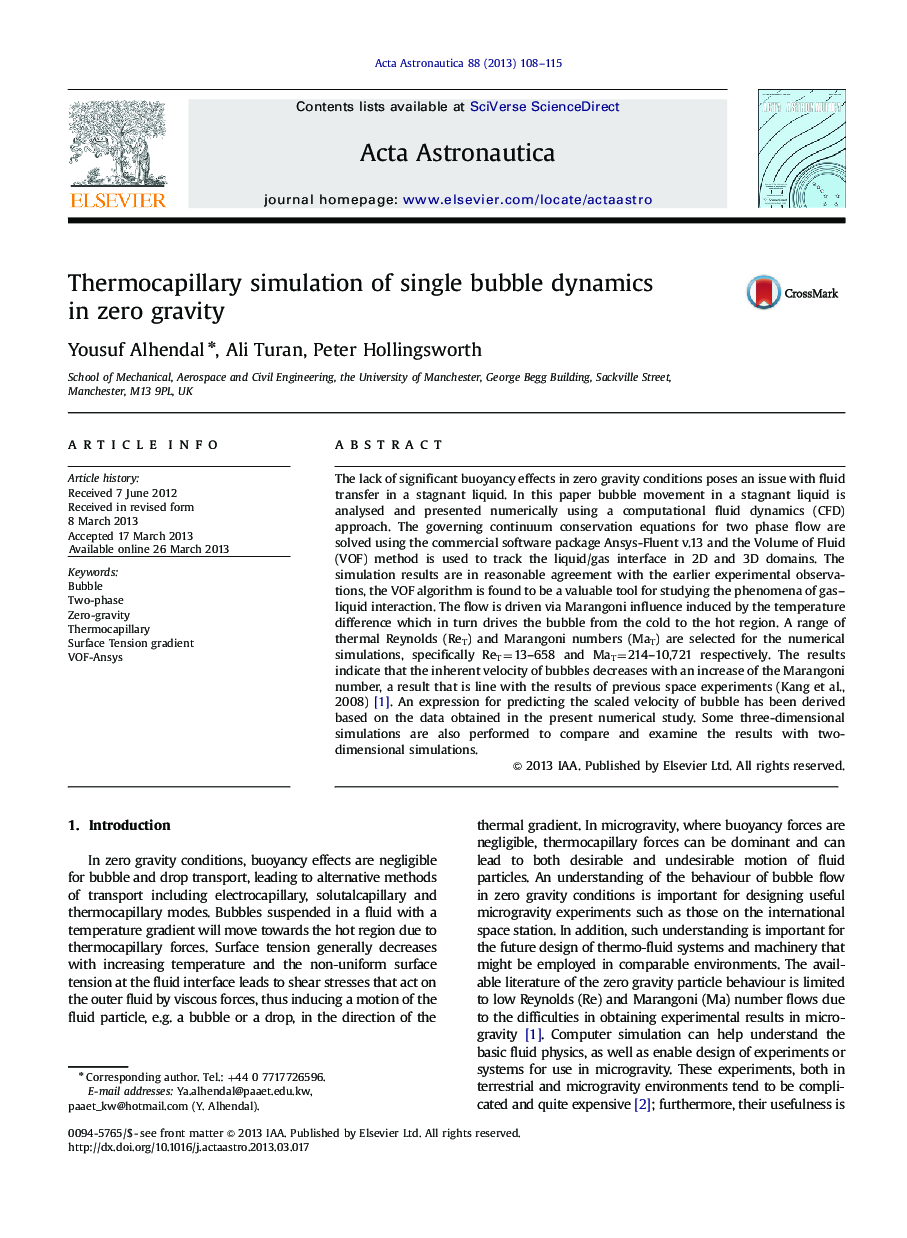| کد مقاله | کد نشریه | سال انتشار | مقاله انگلیسی | نسخه تمام متن |
|---|---|---|---|---|
| 1714992 | 1519962 | 2013 | 8 صفحه PDF | دانلود رایگان |

• Two and three dimensional gas–liquid flow in zero gravity was studied numerically.
• The results are in good agreement with those of the reported in the literature.
• The surface tension gradient plays a considerable role in zero gravity.
• Flow patterns, bubble motion under various temperatures are presented.
• A new formula for predicting the velocity of bubble in zero gravity was proposed.
The lack of significant buoyancy effects in zero gravity conditions poses an issue with fluid transfer in a stagnant liquid. In this paper bubble movement in a stagnant liquid is analysed and presented numerically using a computational fluid dynamics (CFD) approach. The governing continuum conservation equations for two phase flow are solved using the commercial software package Ansys-Fluent v.13 and the Volume of Fluid (VOF) method is used to track the liquid/gas interface in 2D and 3D domains. The simulation results are in reasonable agreement with the earlier experimental observations, the VOF algorithm is found to be a valuable tool for studying the phenomena of gas–liquid interaction. The flow is driven via Marangoni influence induced by the temperature difference which in turn drives the bubble from the cold to the hot region. A range of thermal Reynolds (ReT) and Marangoni numbers (MaT) are selected for the numerical simulations, specifically ReT=13–658 and MaT=214–10,721 respectively. The results indicate that the inherent velocity of bubbles decreases with an increase of the Marangoni number, a result that is line with the results of previous space experiments (Kang et al., 2008) [1]. An expression for predicting the scaled velocity of bubble has been derived based on the data obtained in the present numerical study. Some three-dimensional simulations are also performed to compare and examine the results with two-dimensional simulations.
Journal: Acta Astronautica - Volume 88, July–August 2013, Pages 108–115